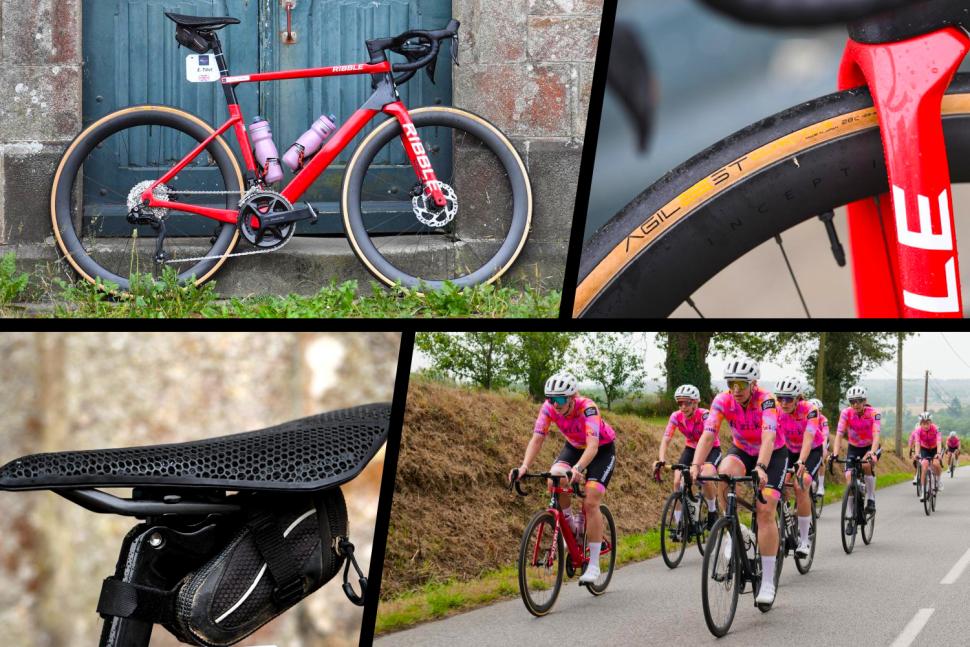There’s always something new in the pro peloton, from lighter bikes to smarter gearing and wider tyres. But when you’re not riding at 45km/h, do those same tech trends really make a difference? I had the chance to ride the first two stages of the Tour de France Femmes, covering 206.5km, climbing 2,863m, and spending 8 hours and 25 minutes in the saddle which was a rare opportunity to test some of that kit on the same terrain. So, what gear made the biggest difference? And what would I change next time?
In both the men’s and women’s Tours this year, aero bikes have dominated regardless of terrain. Where climbers once switched to lightweight models for mountain stages, many now stick with aero setups from start to finish.
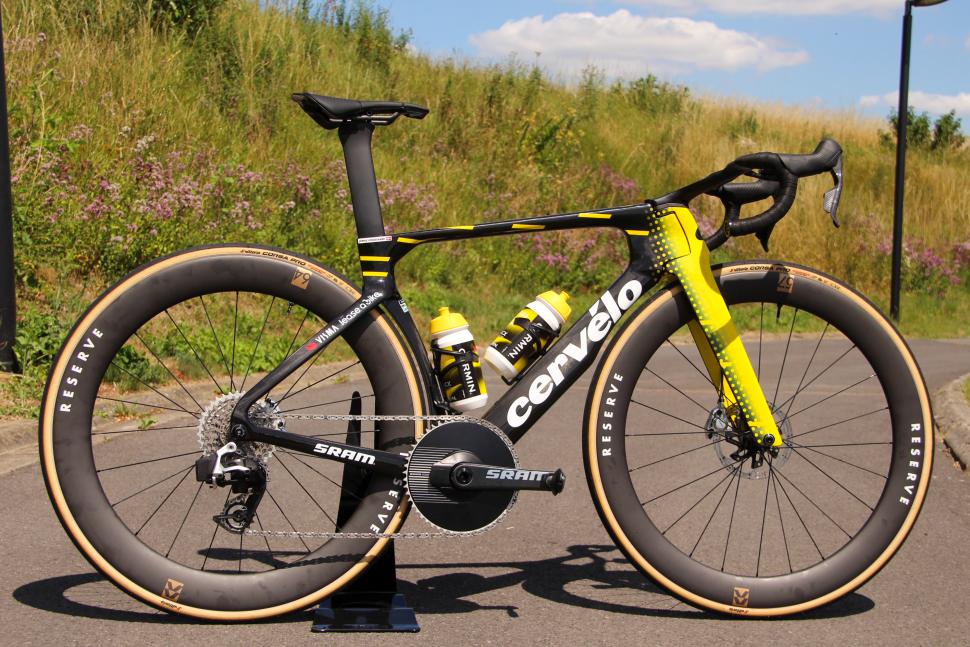 Jonas Vingegaard Cervelo S5 TDF 25-12 (credit: Liam Cahill)
Jonas Vingegaard Cervelo S5 TDF 25-12 (credit: Liam Cahill)
Both UAE Team Emirates-XRG and Visma–Lease a Bike chose to stay on aero bikes throughout the Tour de France, despite having access to all-rounders like the Colnago V5Rs and the Cervélo R5 climbing bike.
This is due to brands closing the gap between aero and lightweight models and the fact that many aero bikes with integrated cockpits and deep wheelsets can be built up close to the UCI’s 6.8kg minimum weight limit.
For a rider like me, tackling the opening two stages of the Tour de France Femmes Avec Zwift (TdFFaZ), albeit at a slightly slower pace, the needs are a little bit different. The terrain was classed as “hilly” by the organisers, with short, punchy climbs.
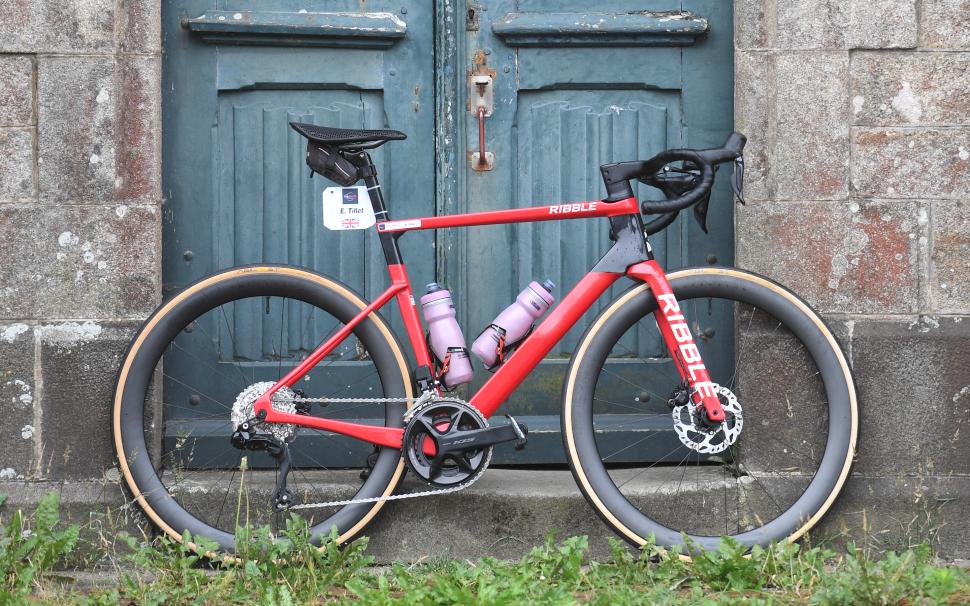 2025 Ribble Ultra Race bike TdFFaZ ©Joolze Dymond (credit: Joolze Dymond)
2025 Ribble Ultra Race bike TdFFaZ ©Joolze Dymond (credit: Joolze Dymond)
I rode the Ribble Ultra-Race, which sits between a pure aero bike and an ultra-light climber in Ribble’s lineup. Its geometry is race-ready, but there are design features – such as the D-shaped seatpost which is intended to add a little flex – to make the ride more comfortable.
At pro race speeds, the aero gains may tip the balance. But for riders like me, where efforts are slightly longer and the pace lower, the versatility of an all-rounder can pay off.
Gearing: 1x or 2x?
> 1x vs 2x: Are single chainring set-ups the future of road cycling or just another marketing fad?
One of the biggest shifts we’ve seen in both the men’s and women’s pelotons in recent years is the adoption of 1x drivetrains, especially in the Classics and flat, punchy stages of Grand Tours. Riders like Marianne Vos and Pauline Ferrand-Prévot have both used 1x setups for the opening stages of the TdFFaZ in Brittany, while on the men’s side, many of the peloton ran 1x until they hit the mountains.
A 1x setup can offer several performance advantages. It’s lighter overall since there’s no front mech or second chainring, more aerodynamic, and it can improve chain retention and simplify shifting.
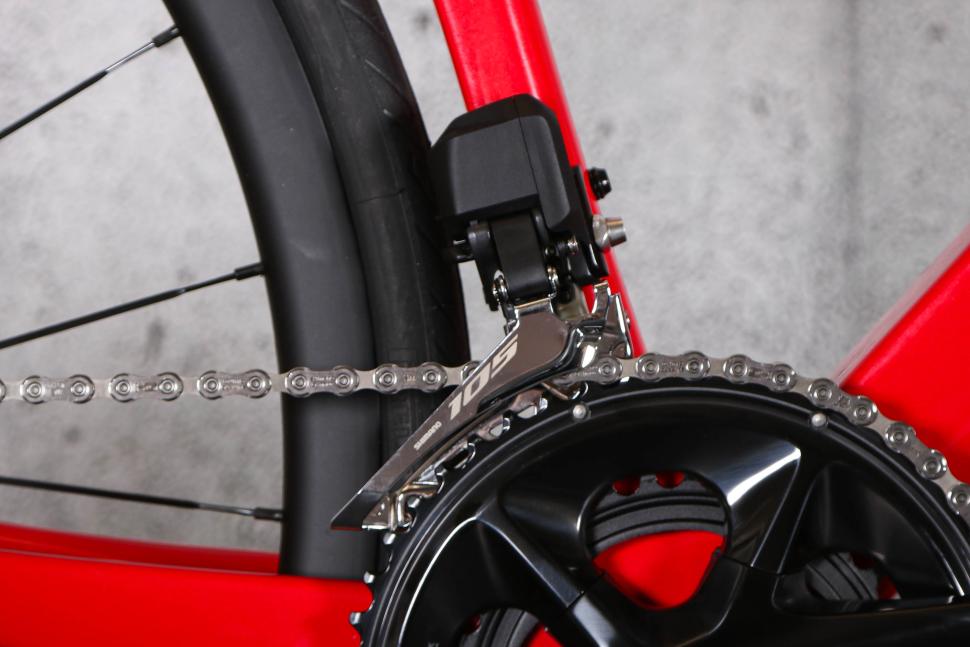 2025 Ribble Ultra-Race 105 Di2 – front mech.jpg (credit: road.cc)
2025 Ribble Ultra-Race 105 Di2 – front mech.jpg (credit: road.cc)
I rode a 2x setup with a 50/34T chainring and a 11-32T cassette and I often found myself cross-chaining on the punchy climbs that defined Stages 1 and 2 of the TdFFaZ.
> Is cross-chaining really that bad? Find out what Shimano and SRAM have to say
Beyond the marginal gains in weight and aero efficiency, 1x just makes sense for terrain like Brittany’s, not only for the pros, but for riders like me too. The climbs come fast and frequently, and even at my pace, I found myself hesitating to shift between chainrings, often cross-chaining instead.
Tyres: wider doesn’t mean slower
2025 Panarace Agilist Duro TLR tyre ©Joolze Dymond (credit: Joolze Dymond)
Road bike tyres have ballooned in recent years thanks to wider tyres offering enhanced ride quality, comfort and performance. Wider tyres don’t make you slower and most pro riders are now running 28mm tyres as standard, with some going wider depending on the course and weather.
I used Panaracer Agilist Duro TLR tyres in a 28mm width which struck a good balance – grippy but still fast rolling.
The Ribble Ultra-Race I rode has clearance for tyres up to 32mm so there’s scope to go even wider if comfort is a priority or if the road surface demands it. For these Brittany stages with relatively smooth roads, 28mm felt like the sweet spot .
Saddles: 3D printing takes over
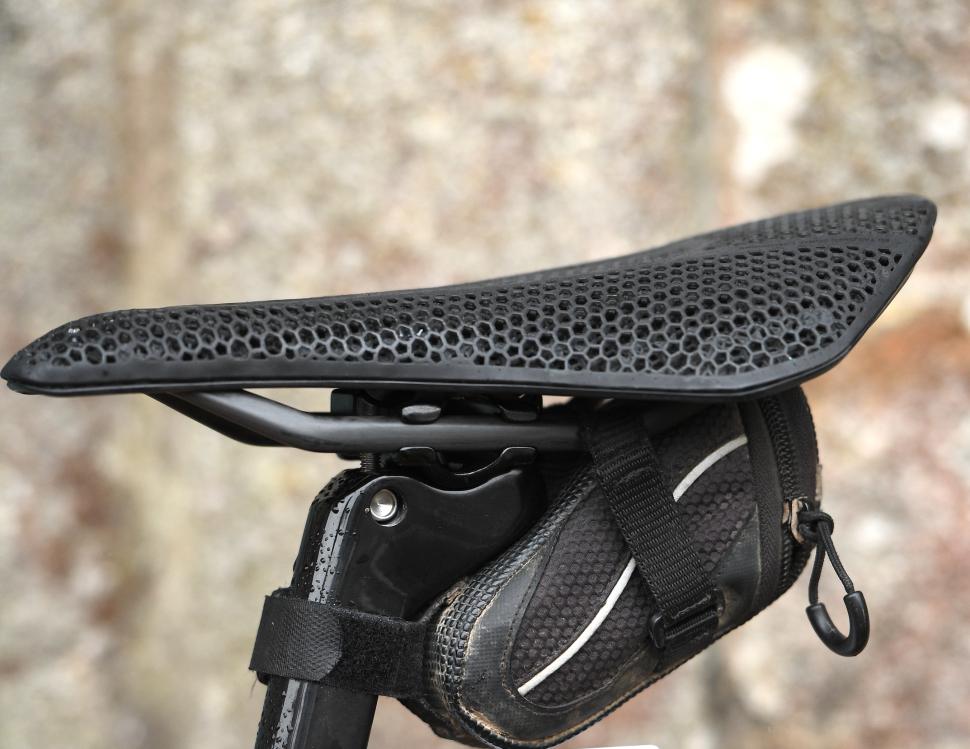 2025 Fizik Vento Argo 00 Adaptive saddle ©Joolze Dymond (credit: Joolze Dymond)
2025 Fizik Vento Argo 00 Adaptive saddle ©Joolze Dymond (credit: Joolze Dymond)
There are now more 3D-printed saddles in the pro peloton than ever before, offering a more personalised fit than stock options from years gone by.
Specialized was among the first major brands to bring 3D-printed saddles to the mass market back in 2019 with its Mirror technology. Since then, many other brands have followed suit with their own takes on the concept.
We spotted a very fancy limited edition version of the S-Works Power EVO with Mirror at the Tour de France departe on the bike of a Soudal Quick-Step rider, a model that’s also made an appearance at the TdFFaZ.
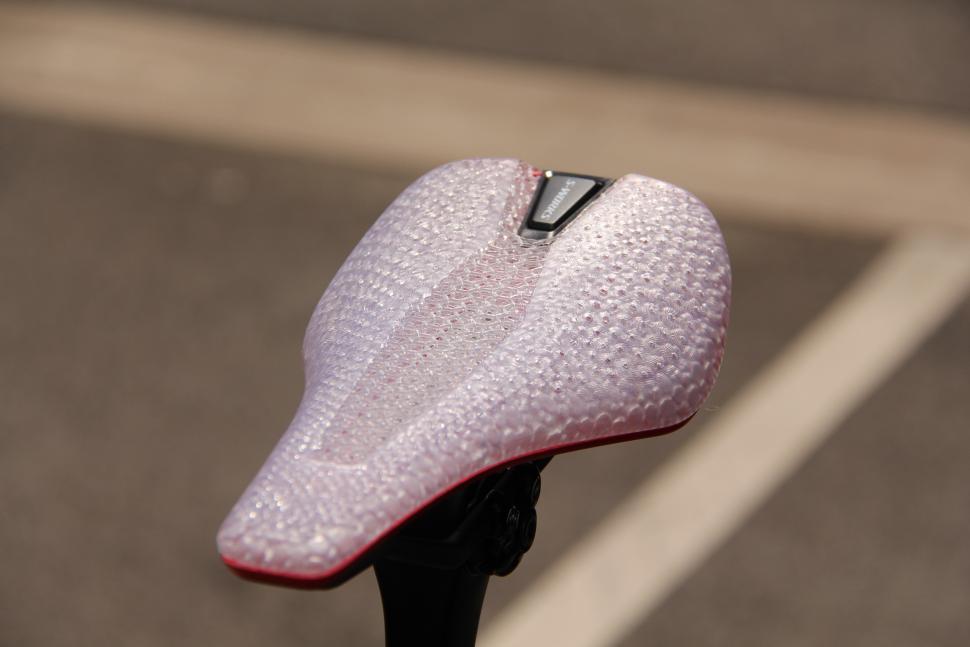 Tour de France 2025 Tech Gallery – Specialized S-Works Power EVO with Mirror speciali edition transparent red (credit: Liam Cahill)
Tour de France 2025 Tech Gallery – Specialized S-Works Power EVO with Mirror speciali edition transparent red (credit: Liam Cahill)
For the two stages I rode, I used Fizik’s Vento Argo 00 Adaptive saddle in the 140mm width, which is the brand’s top-tier race saddle featuring a 3D-printed Adaptive padding design. This was my first experience on a 3D-printed saddle, and even though I wasn’t riding at full race pace, I spent over 5.5 hours in the saddle each day and didn’t experience any discomfort.
While the pros might ride at a different speed, the gear choices filtering through the peloton are increasingly relevant to the rest of us.
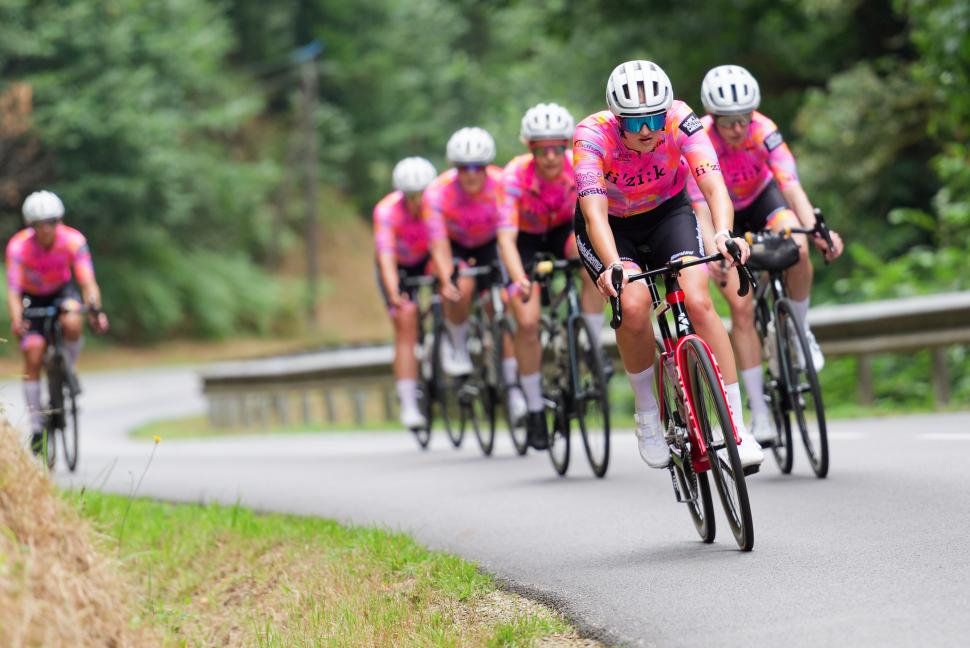 2025 Emily TdFFaZ riding shot ©Joolze Dymond (credit: Joolze Dymond)
2025 Emily TdFFaZ riding shot ©Joolze Dymond (credit: Joolze Dymond)
After riding two Grand Tour stages, I’d stick with the 28mm tyres, which felt fast and grippy, but switch to a 1x drivetrain for simplicity on punchy terrain. The 3D-printed saddle was great for all-day comfort, and the all-rounder bike struck the right balance between aero performance and climbing.
If you were riding a Grand Tour stage, would you go full aero or go for comfort? Let us know in the comments section below.

